11 Flowers that Look Like Hydrangeas For Your Spring Garden

This post follows our research editorial guidelines.

The dramatic swaying heads of glorious hydrangeas are an eternal favorite of cool, moist gardens. Their massive radiant mop-head flowers are impressive and hard to top. They’re also a little bit magical, changing color as the acidity around their roots changes over time. But the natural world is nothing if not inventive, and there’s an equally prolific bloomer to suit any climate or soil type.
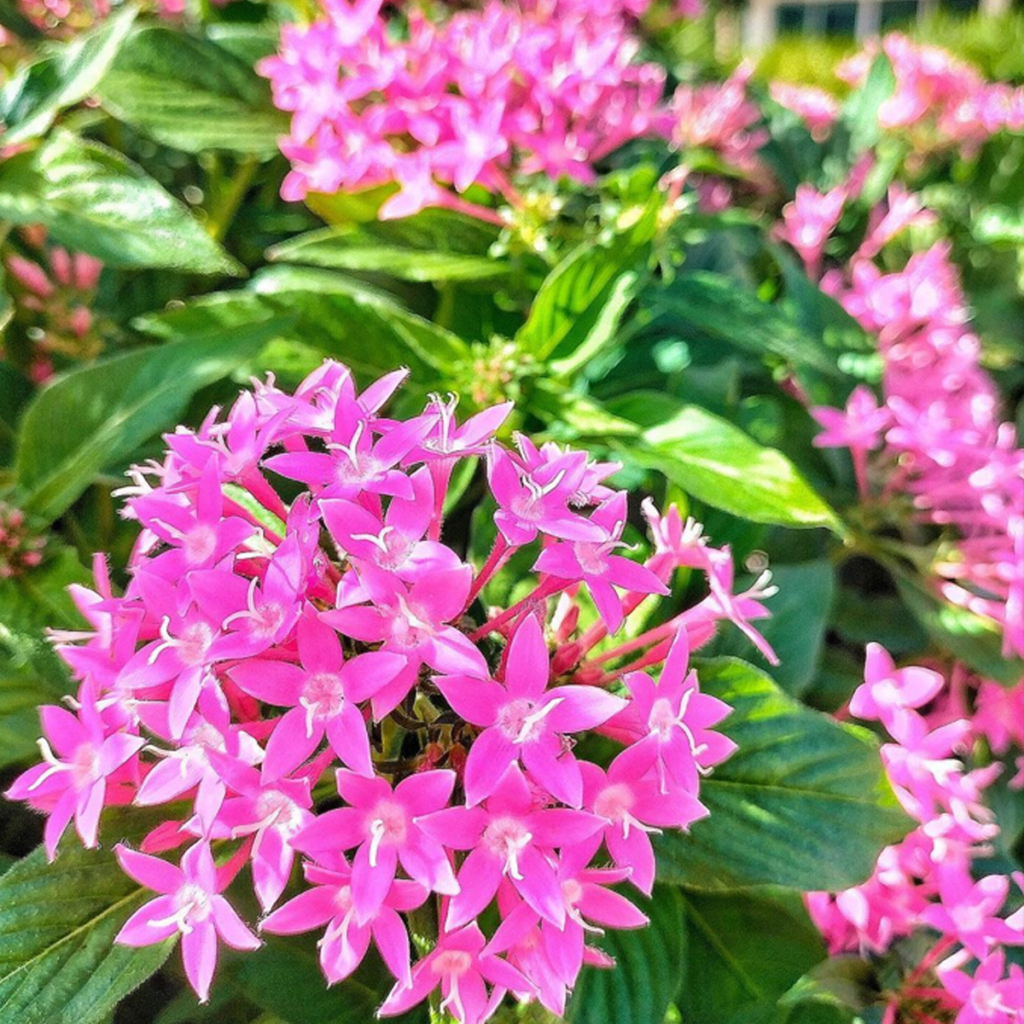
Quickly Find The Flower Your Looking For
1. Butterfly Bush (Buddleja davidii.)

Our first lovely lookalike is the butterfly bush [1]. Its dense purple or red flower heads are more elongated than the moppish balls you find on hydrangeas, more tapered and reminiscent of a fox tail. As you can no doubt tell from the name, butterflies love them and they’re a great feature for pollinator gardens.

Unlike hydrangeas, they are astonishingly hardy, drought-tolerant and capable of growing in poor soils. It’s made them invasive in many parts of the United States, so if you want to grow them at home be ready to prune them aggressively and deadhead to prevent self-seeding.
You Might Also Like:
2. Crape Myrtle (Lagerstroemia indica)
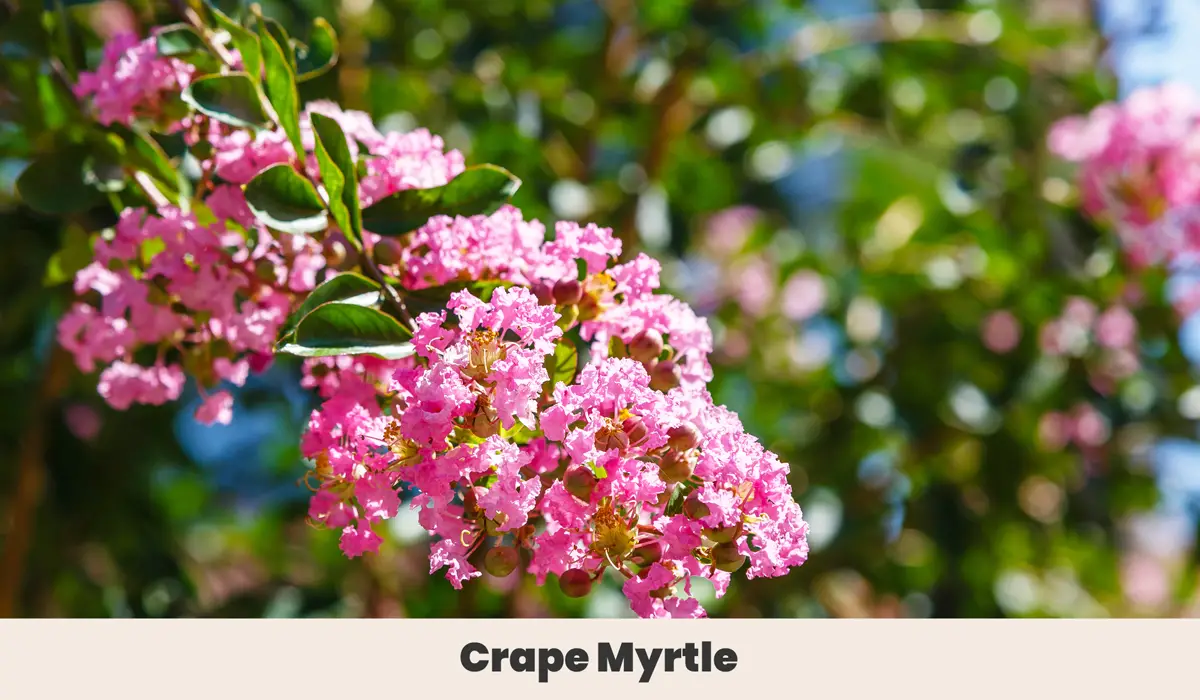
Sometimes called crepe myrtles, the crape myrtle [2] is a summer show stopper with profuse clusters of radiant red, pink or white blooms. They’re named for the rippled texture of their blossoms, and it’s common for them to feature fruit and flowers at the same time.
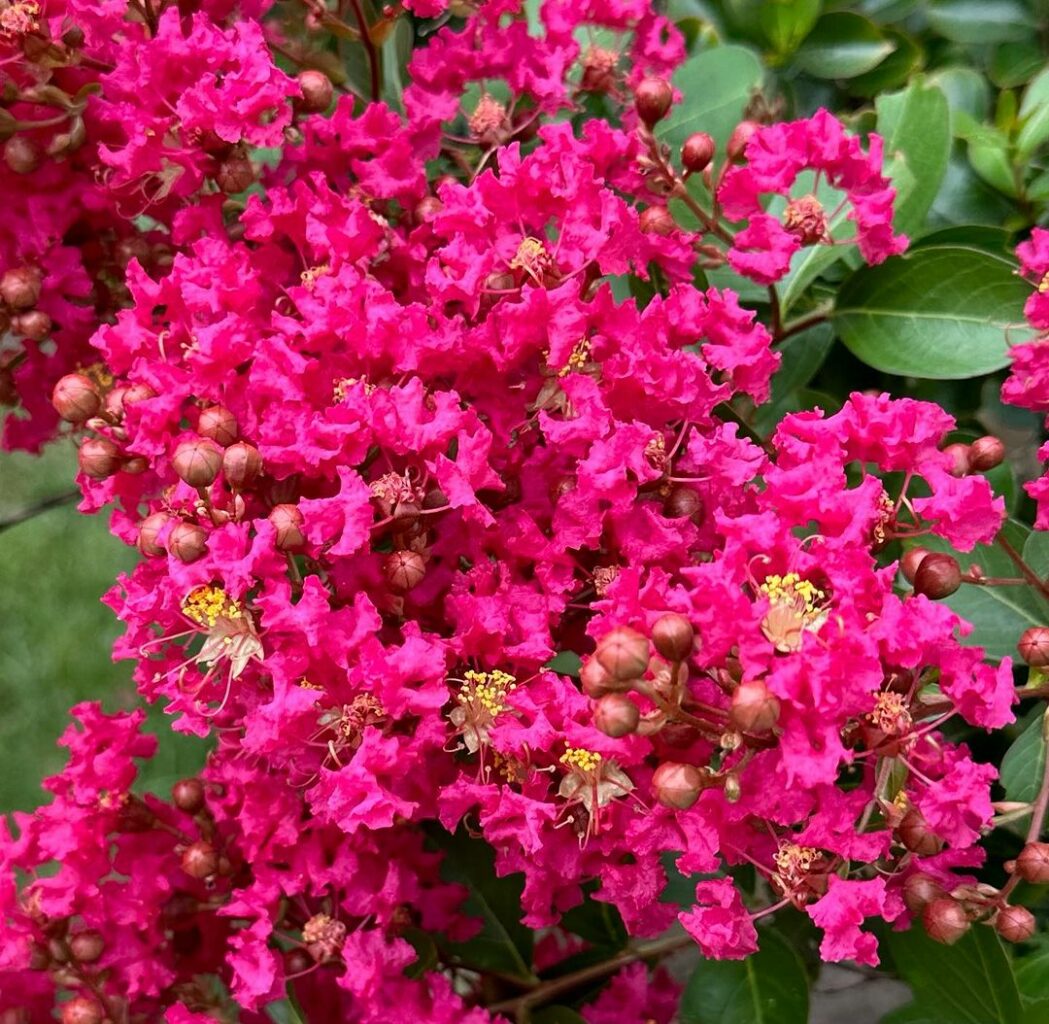
With a bit of work you can prune these fast-growing trees down to a shrub, which makes the crape myrtle a versatile plant with many uses for the home gardener. I like to let them spread their branches and provide shade as well as spectacular floral displays.
3. Egyptian Star Cluster (Pentas lanceolata. )
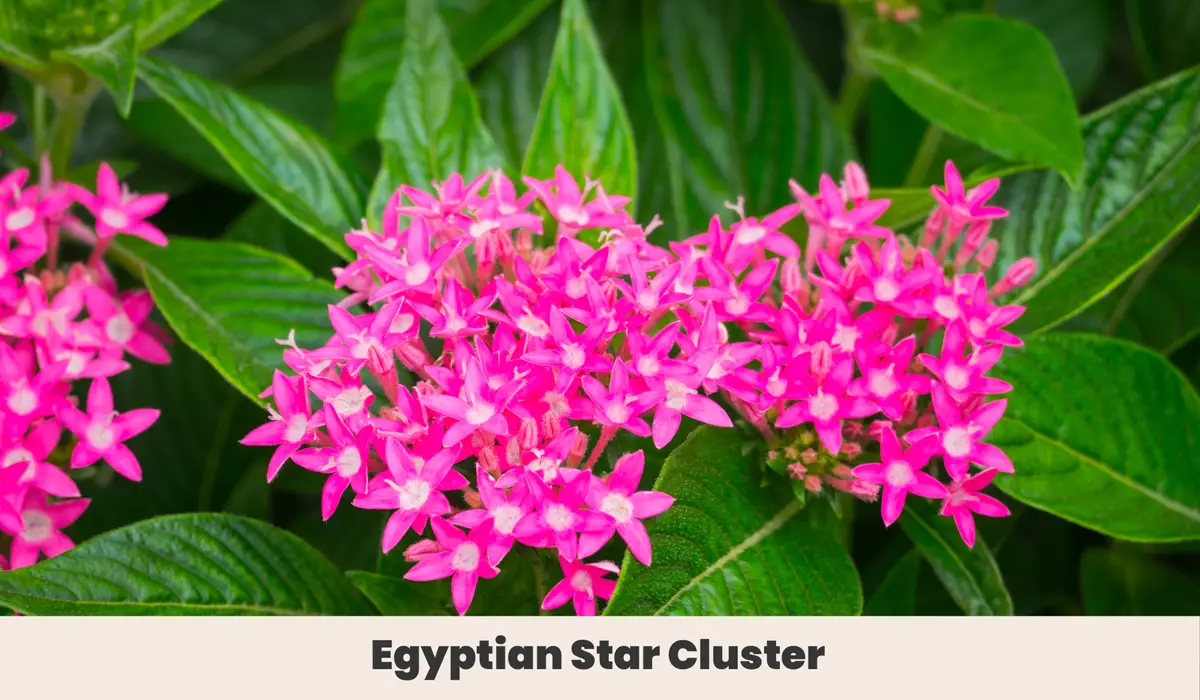
The Egyptian star cluster [3] lives up to its name with tightly packed balls of richly hued star-shaped flowers. They have a real tropical pizzazz, combining the smooth geometry of the array with each sharp five-pointed blossom. Their rich red color is irresistible to butterflies and hummingbirds and will draw them to a southern garden in droves.

Egyptian star cluster flowers are drought-hardy, loves lots of light and will bloom all year round if they are kept sufficiently warm. They’re a North African native, so growers in cooler climes will need to keep them indoors in a greenhouse or a well-lit room if they want to see those gorgeous flowers.
4. European Cranberry (Viburnum opulus.)
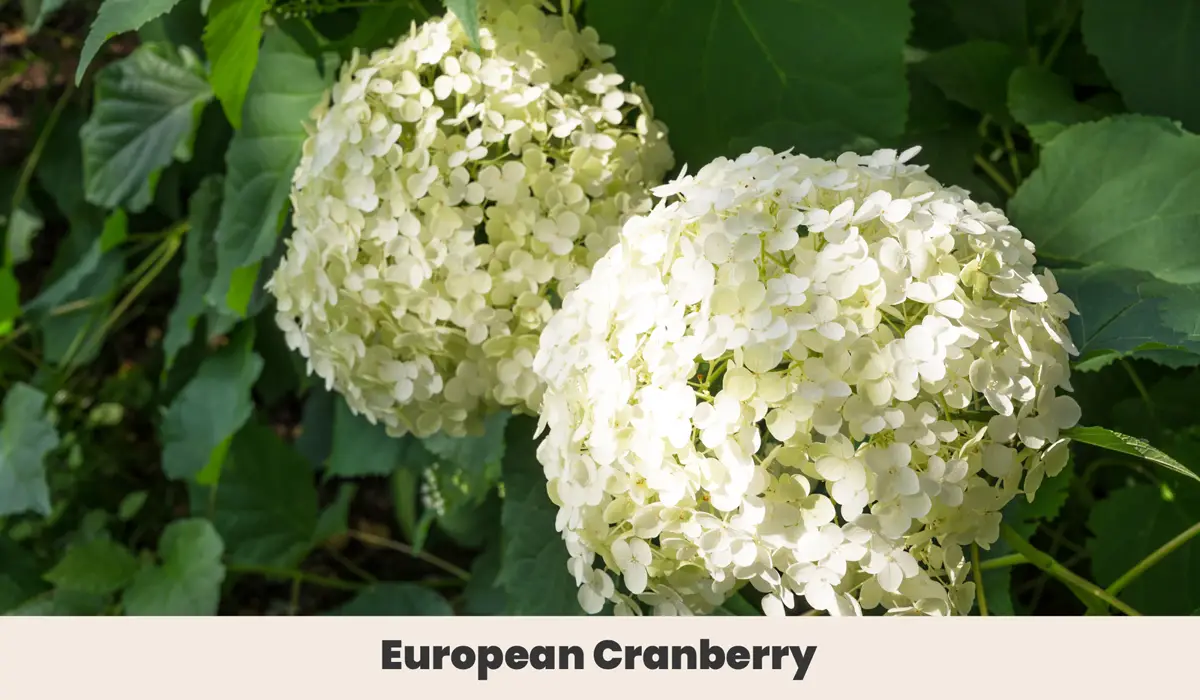
Sometimes called water elder or the evocative Guelder-rose, the European cranberry [4] is a sprawling deciduous shrub capable of reaching 2 meters (6 feet) tall and almost as wide. It’s known for showy white blossoms that erupt in tight white spheres through the early spring and summer. Once pollinated, the petals shed to reveal a secondary display of fat red berries.
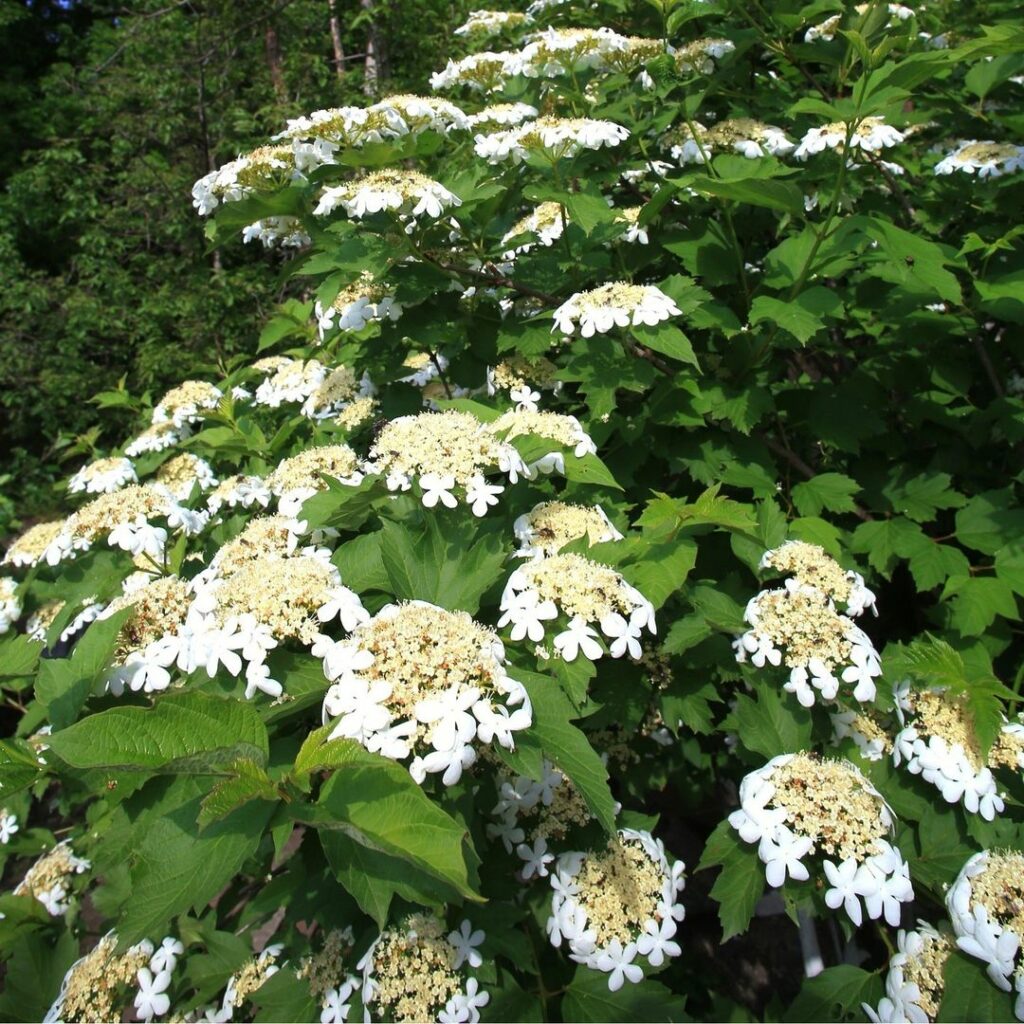
Th European cranberry is so easy to grow it’s become a problem plant in some parts of the United States. The berries are irresistible to bird life, and these feathery accomplices are prone to spreading seeds far and wide. Plant European cranberry with care, or consider an American native cranberry if you’re in the US.
5. Heliotrope (Heliotropium spp.)
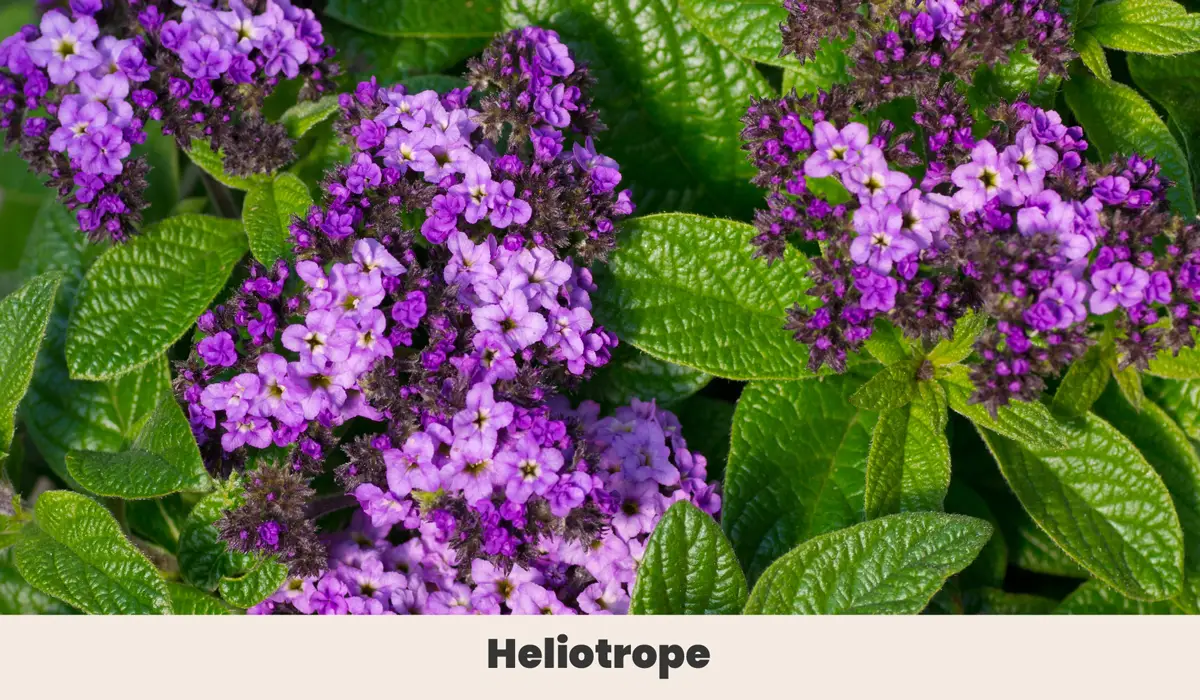
A tiny mimic of the hydrangea, heliotrope [5] forms almost perfect miniature copies of the former’s mop-head blooms. It’s a far easier plant to keep if you’re in a closed space, as the are a manageable shrub that only grow to a bit over a meter (four feet) in height.
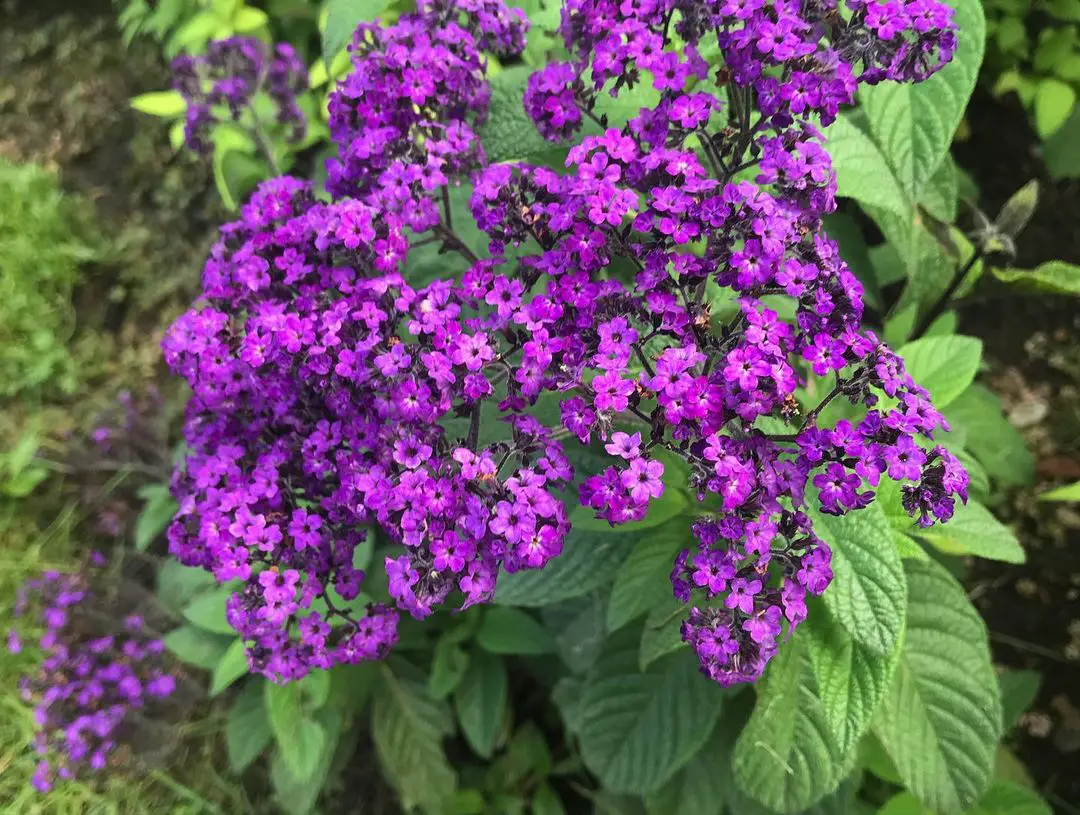
They’re a great choice for renters or apartment dwellers, as they will happily grow in containers. They also make for a wonderful cut flower – traditionally, a helioptrope bouquet means devotion and eternal love.
6. Lantana (Lantana camera.)

Like heliotrope, lantana [6] produces much smaller flower clusters that mimic the hydrangea’s luscious spherical displays. It’s a sprawling shrub well known for growing in disturbed, poor-quality soils, a good choice for stabilizing slopes or embankments.

Depending on the variety of lantana you choose, you may be treated to flowers that range in color from standard pinks, purples and reds to the ‘bacon-and-egg’ varieties with their characteristic brown, orange and white puffs. It can get away from you and become invasive, so make sure it’s well-suited to your area before you plant.
7. Lilac (Syringa vulgaris.)
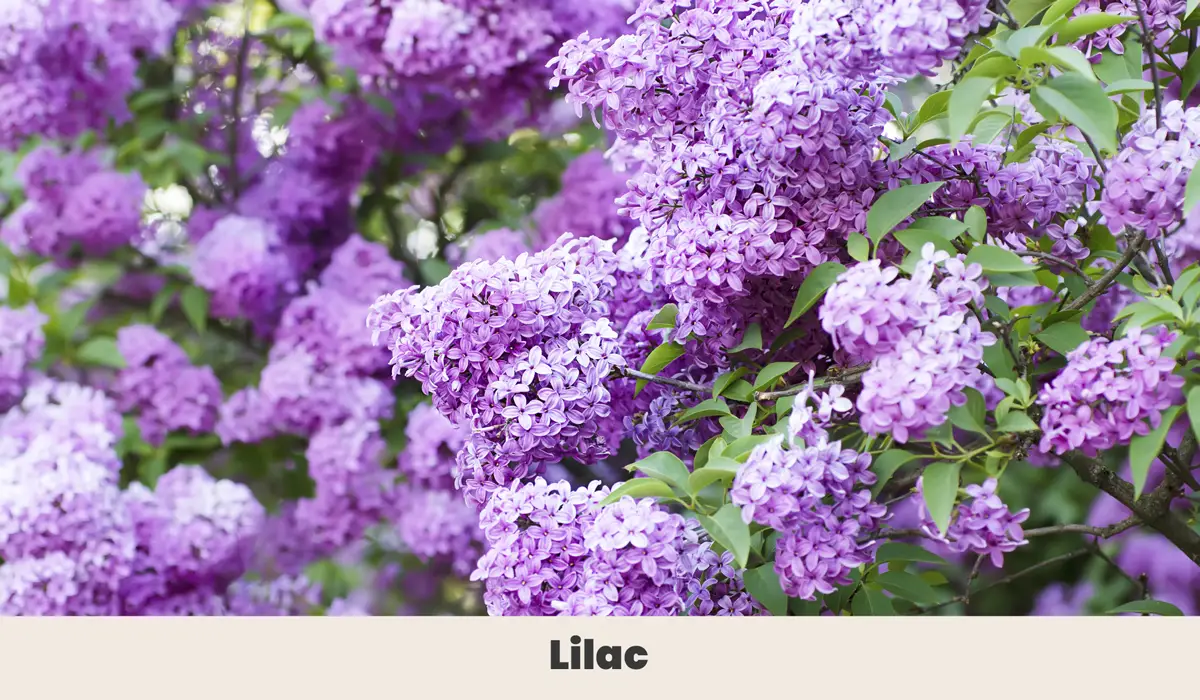
The classic hydrangea lookalike, lilacs [7] are a cottage garden staple with a long and beloved history as a cornerstone feature plant. I’ve always loved the timeless charm of its drooping pale purple flower heads and the distinctive aroma. My garden is full of Lilacs and I’m fortunate enough to enjoy their heavy perfume aroma every spring while in full bloom.

While I’ve selected common lilac to showcase here as it’s the easiest for most folks to find, there’s a lilac cultivar to suit most gardens. I’m partial to the ‘Beauty of Moscow’ variety with its double white blooms tinged in lavender blush, and the unusual yellow ‘Primrose’.
8. Mountain Laurel (Kalmia latifolia)
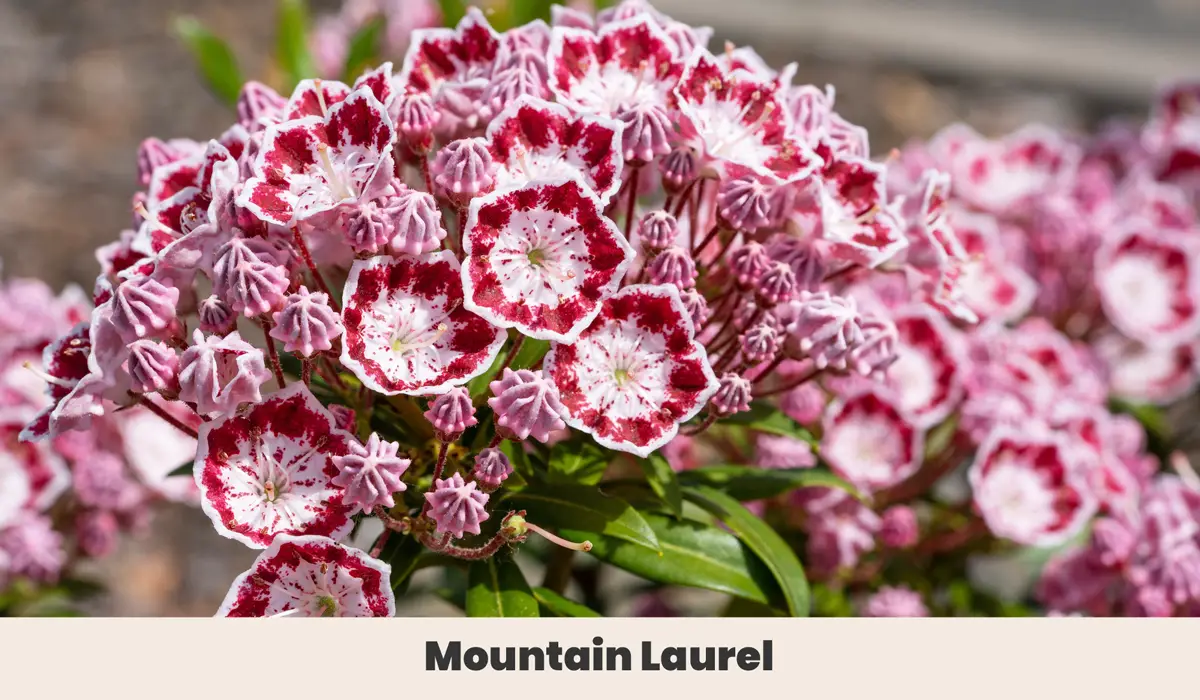
While the panicles of mountain laurel [8] are similar in shape and size to a hydrangea, each individual blossom is startling in its geometry. A wide, almost geometrically crisp hexagon in shades of scarlet, white, and pink, with radiant stamens and contrasting circles at the heart makes for a truly arresting flower – especially in the vast numbers a mountain laurel produces!
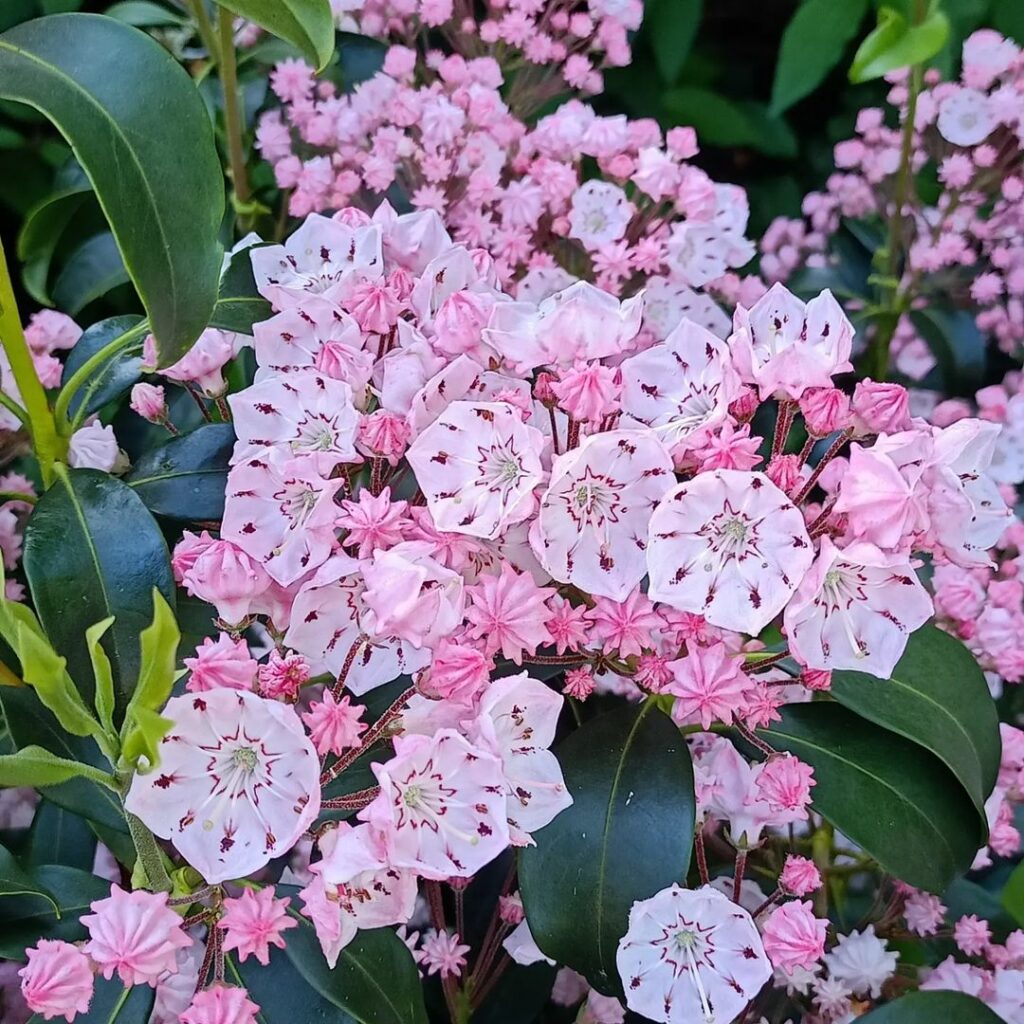
The mountain laurel is a good-sized shrub once mature, over 4.5 meters (15 feet) tall. Besides their entrancing blooms, they’re also known for their luscious deep green foliage that makes them an appealing plant all year round.
9. Rhododendron (Rhododendron spp.)

With over a thousand different species, the rhododendrons [9] are a genus of woody plants that have been long cultivated for their dramatic displays of color. They’re often confused with azaleas, which is understandable as azaleas are in fact a smaller subset of rhododendron!
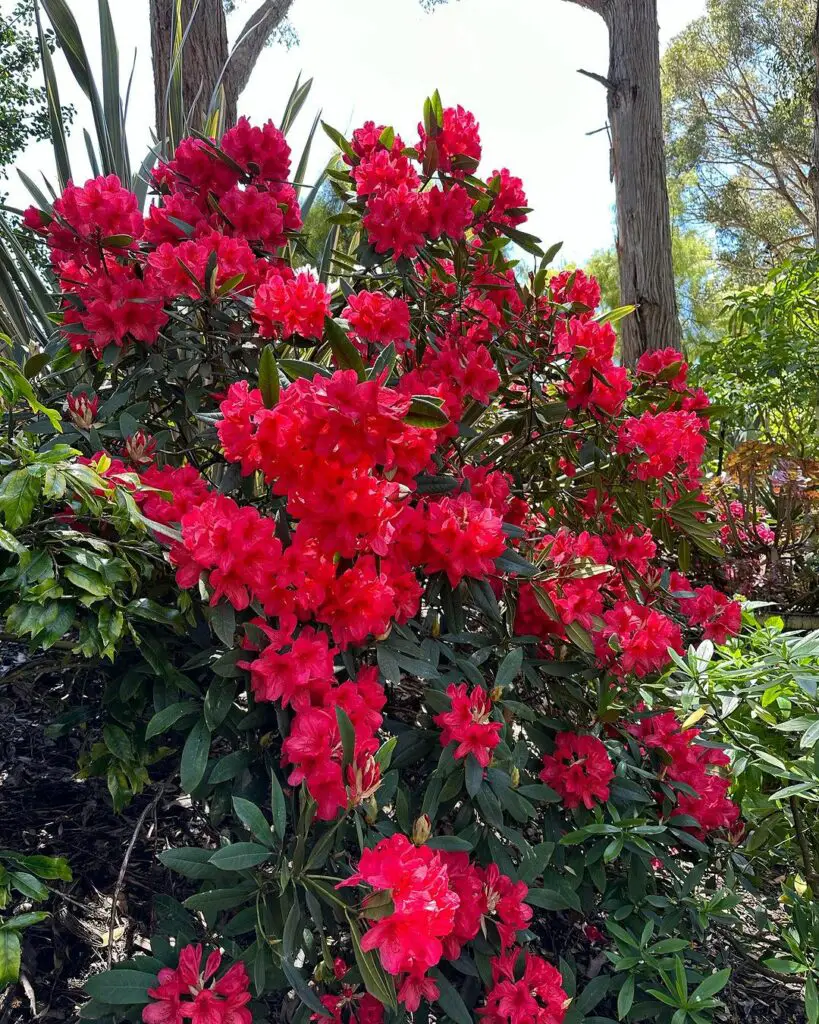
No matter the size of your plant, a rhododendron’s flower heads are generally smaller than those of a hydrangea, but in my opinion more punchy. They are frilled, with more irregular placement of blooms around the cluster and cheeky stamen that wink out from the blossoms. They bring a touch of charming chaos that contrasts with the sleek sophistication of hydrangeas, the perfect flowers for front-of-house gardens.
10. Spirea (Spiraea cantoniensis)

An uncommon contender in any hydrangea lookalike competition, the spirea [10] is a pale princess capable of swamping your garden with garlands of fat snowy spheres. It’s also known as the May bush, as it flowers like clockwork each May in its native Chinese range.
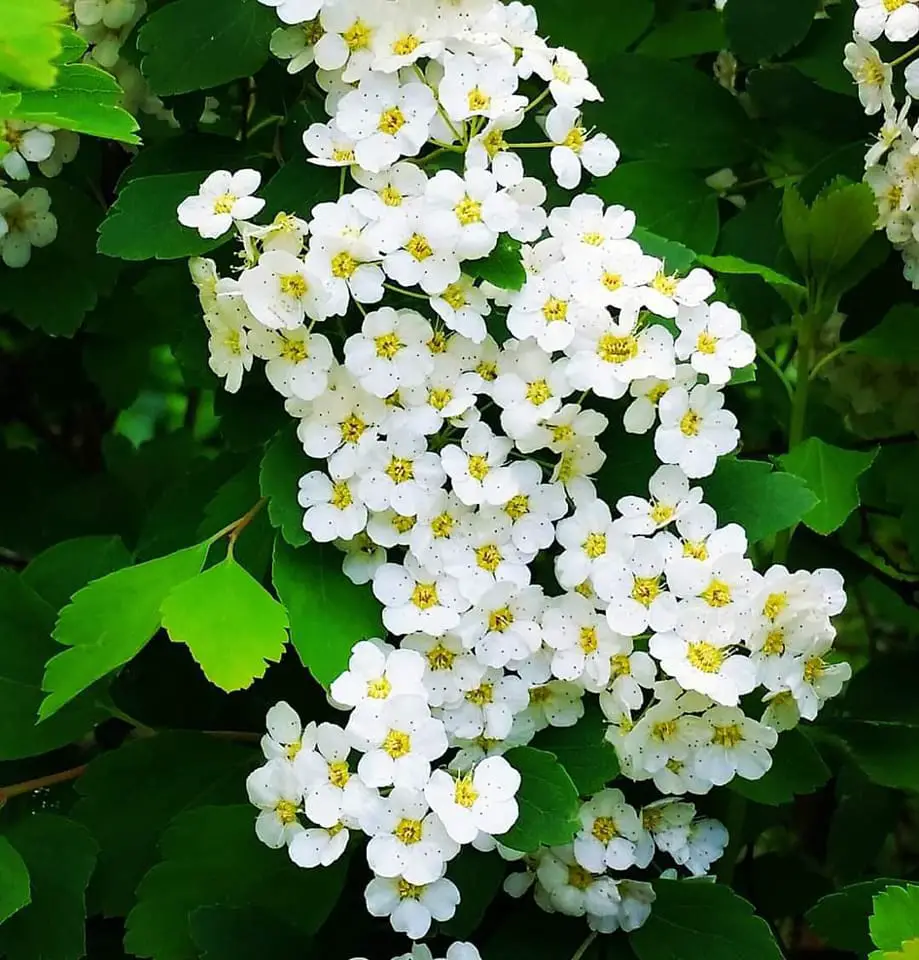
There’s a few different cultivars on the commercial market, with differing heights and intensity of flower. The ‘Lanceata’ variety is especially prolific, producing long boughs of bright blooms each spring. If you’re looking for more detailed tips on how to care for your Spirea, I recently shared my techniques on pruning these wonderful plants over at Homes & Gardens Magazine here.
11. Chinese Snowball Shrub (Viburnum macrocephalum)

If I had to give out a prize for the most impressive hydrangea lookalike, I would award it to the Chinese snowball shrub [11]. These spectacular shrubs reach twice the height of a typical hydrangea, and produce far more flower heads each spring.
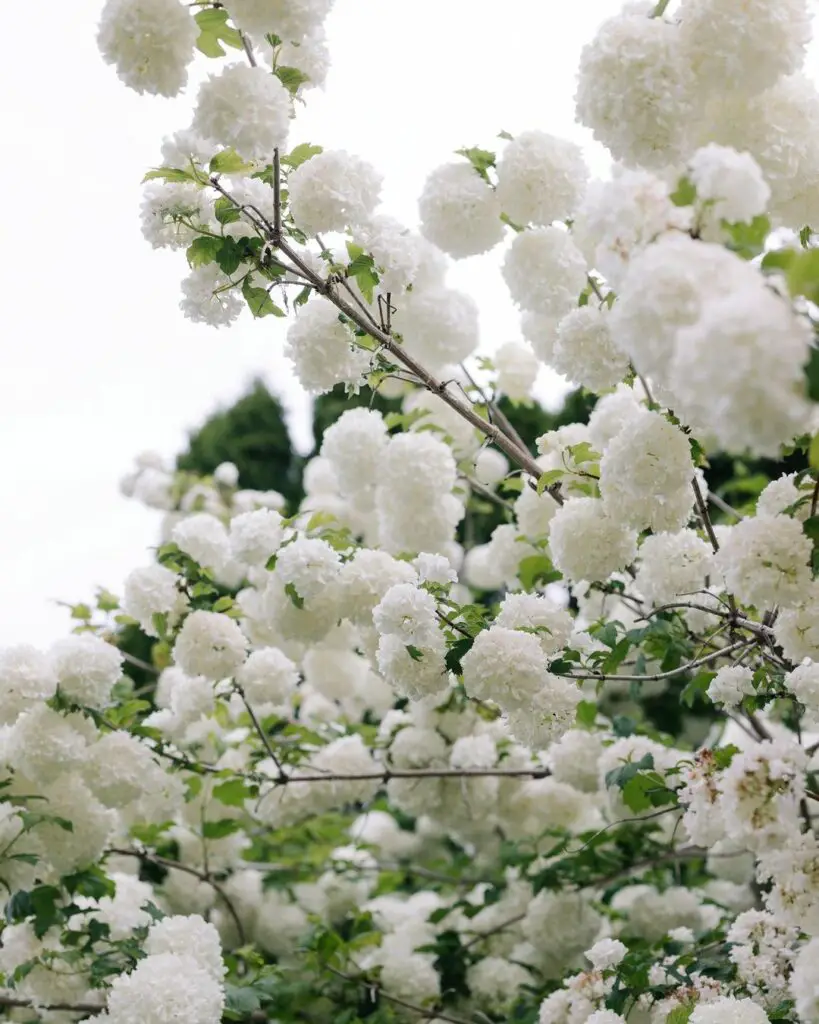
They are a bright, lustrous white that gives them their common name, and they do truly seem snowed under once their blooming season truly kicks off. While they’ll thrive in most soil types you’ll need to plant yours in full sun if you want to get those snowballs coming.
Final Thoughts
I love hydrangeas for their dramatic blooms and luscious foliage. They do need a fair bit of water and just the right type of soil, so it’s wonderful to have so many flowering trees and shrubs that will bring that spring sophistication no matter what the conditions. Getting the right plant and container plants and broad trees alike can provide a floral bounty to more than equal to that of the beloved hydrangea.
Sources:
- North Carolina State University. (n.d.). Buddleja davidii. Retrieved February 6, 2024, from https://plants.ces.ncsu.edu/plants/buddleja-davidii/
- Stanford University. (n.d.). Lagerstroemia indica. Retrieved February 6, 2024, from https://trees.stanford.edu/ENCYC/LAGERindica.htm
- Missouri Botanical Garden. (n.d.). Pentas lanceolata (Star Cluster). Retrieved February 6, 2024, from https://www.missouribotanicalgarden.org/PlantFinder/PlantFinderDetails.aspx?taxonid=286726&isprofile=1&gen=Pentas
- The Dawes Arboretum. (n.d.). Taxon: 29062. Retrieved February 6, 2024, from https://dawesarb.arboretumexplorer.org/taxon-29062.aspx
- North Carolina State University. (n.d.). Heliotropium. Retrieved February 6, 2024, from https://plants.ces.ncsu.edu/plants/heliotropium/
- University of Oxford, Herbaria. (n.d.). Lantana. Retrieved February 6, 2024, from https://herbaria.plants.ox.ac.uk/bol/plants400/Profiles/KL/Lantana
- North Carolina State University. (n.d.). Syringa vulgaris (Lilac). Retrieved February 6, 2024, from https://plants.ces.ncsu.edu/plants/syringa-vulgaris/
- Oregon State University. (n.d.). Kalmia latifolia. Retrieved February 6, 2024, from https://landscapeplants.oregonstate.edu/plants/kalmia-latifolia
- Royal Horticultural Society. (n.d.). Rhododendron: Growing guide. Retrieved February 6, 2024, from https://www.rhs.org.uk/plants/rhododendron/growing-guide
- North Carolina State University. (n.d.). Spiraea cantoniensis. Retrieved February 6, 2024, from https://plants.ces.ncsu.edu/plants/spiraea-cantoniensis/
- Missouri Botanical Garden. (n.d.). Plant Finder: Taxonid=278985. Retrieved February 6, 2024, from https://www.missouribotanicalgarden.org/PlantFinder/PlantFinderDetails.aspx?taxonid=278985

